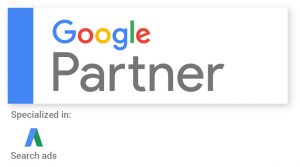Unfortunately, it is true that paid search engine exposure using Google Ads on Google.com and Microsoft Advertising ads on Bing.com is no longer optional for business growth.
The ever shrinking landscape and increased competition for space online and particularly on small screen devices has made positioning your brand or service in paid search engine ads nearly mandatory for growth. Of interesting note is that even social networks are starting to become paid vehicles for business too.
The days of posting great content and being discovered and placed organically with that content are nearly a thing of the past.
With a typical business spending 10% of it’s sales budget on marketing, it is time to review how much you are spending in paid search and even paid social placements and platforms.
Here’s what we see as of March 2020 as important trends and client use:
• Clients are increasing budgets in Google Ads and using more Display and audience features to provide value and targeted results. The typical client is spending over $3,000 for clicks per month and many significantly more as they receive a strong return on their investment.
• We have clients in the social marketing space, but have not seen high numbers move into paid marketing hereyet, but competitors in some industries are investing in sponsored content in social in increasing numbers. This will be a high growth area for spending in the upcoming years for some business sectors. Specifically we expect this growth to happen on Facebook and Instagram.
• More clients are moving into Microsoft Advertising as remarketing can still be done for healthcare and legal professionals – whereas these markets are banned from using this type of advertising through Google Ads.
• We are seeing strong interest in Microsoft Advertising for LinkedIn targeted audiences on Bing.com. For most accounts we are not seeing this as an option in account settings yet, but it is coming, and will be an excellent reason to advertise on Bing.com. For business to business selling clients – this new targeting option will be reason enough to move into the Microsoft Advertising platform.
• Google is making big changes to the Google Partners program and many agencies will be dropping or not be able to re certify with the new program. Our value to you is that we will continue to work to comply with all requirements to keep our Google Partner status. We will soon be certified in all areas and fully expect our certification to be renewed in June. Watch your account management firm’s credentials to assure that they do not let slip this important qualification that sets professional account managers, like ourselves, apart from managers that are not serious or skilled in account management.
As a Google Partner and Microsoft Advertising Partner, McCord Web Services takes strategic account management seriously. Find out more about our services and qualifications today. We would be glad to chat with you to see if our services and capabilities are a good match for your search engine marketing management needs.



